Wetland Diary 02 October 2006
Previous Entry | Wetland Index | Next Entry
It was a changeable Monday in October, as I set out on my first trip to the Wetland Centre since late August. Dragonflies were still abundant, and I saw several by the amphibian pond, as well as one near the entrance. Also in the amphibian pond was a bathing Coot (Fulica atra), pictured below, which was spraying water across the pond as it flapped its wings.
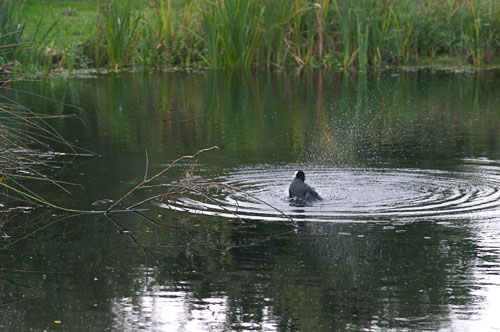
Bathing Coot (Fulica atra).
There had been several heavy showers earlier in the morning, and this seemed to have brought out the slugs, and some huge ones at that. I photographed one Red Slug (Arion rufus) by the Amphibian Pond in the sunshine, when stretched out it was probably 10 cm long (NB. I found conflicting information on recognising Black Slugs (Arion ater) from the Red species, and to whether they are the same species). Later, when it rained hard (see below) slugs were crawling in large numbers over parts of the path, making walking tricky.
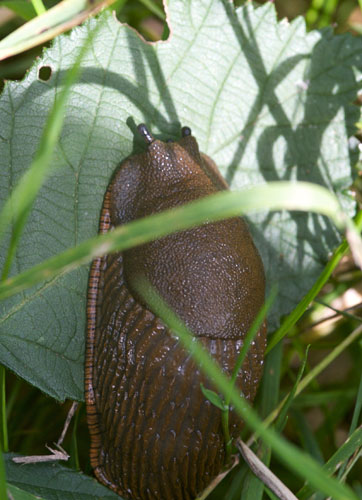
Red Slug (Arion rufus).
After my last trip, which featured many Marsh Frogs (Rana ridibunda), it was good to see some Common Frogs (Rana temporaria). The newly metamorphosed Common Frogs were tiny, much smaller than I remembered. The young Marsh Frogs were much larger. The Common Frogs were very skittish, so I didn't manage to get a good photo of any of them. I did manage to get several good shots of the more relaxed, and beautifully patterned, Marsh Frogs.
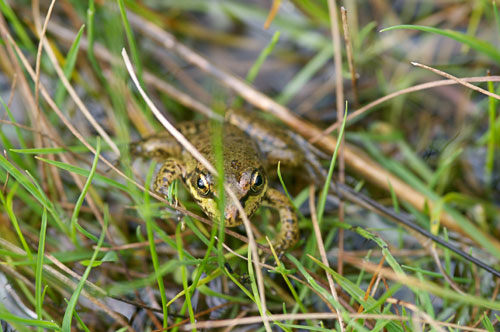
Young Marsh Frog (Rana ridibunda).
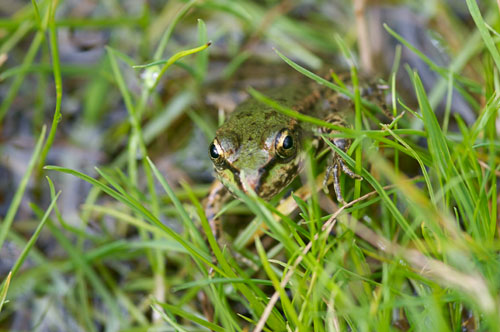
Young Marsh Frog (Rana ridibunda).
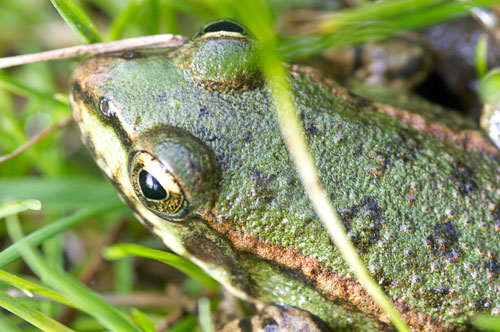
Young Marsh Frog (Rana ridibunda).
While there were many young Marsh Frogs, I only saw one adult, and then only from a distance well camouflaged amongst the reeds.

Adult Marsh Frog (Rana ridibunda) among the reeds.
I headed north from the small ponds of the Wildside area in the direction of the Wildside Hide to see what wintering ducks were about. In one of the small lakes I found a lone Tufted Duck (Aythya fuligula) bathing. The Sun had come out at this point, and the ripples on the water caught the light well.
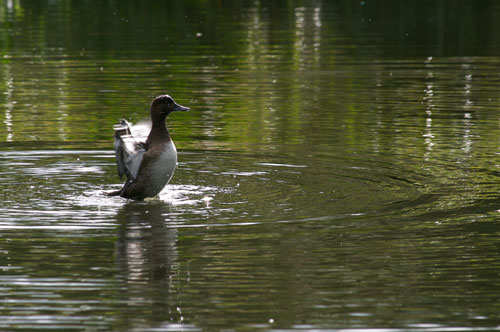
Tufted Duck (Aythya fuligula).
As I approached to field lab I almost walked straight past a Grey Heron (Ardea cinerea) on the bank.

Grey Heron (Ardea cinerea) fishing.
The heron seemed a little alarmed by my presence, and despite moving away from it, it took off and alighted on submerged branch a somewhat farther away.
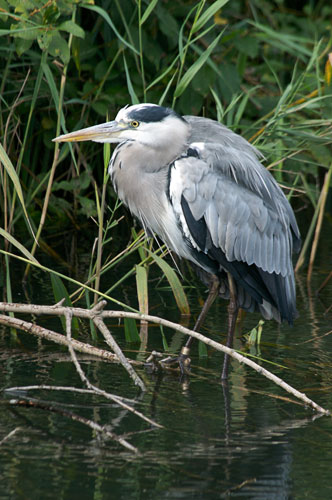
Grey Heron (Ardea cinerea) on a submerged branch.
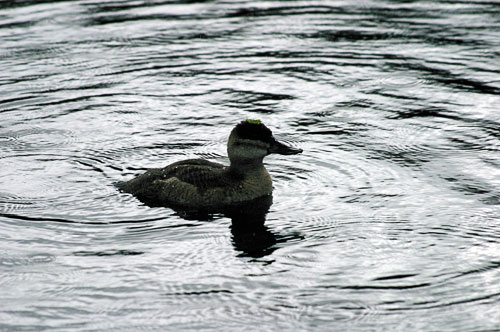
Female Ruddy Duck (Oxyura jamaicensis).
It began to rain, and as I was already heading towards the Wildside Hide I quickened my pace. On one of the lakes there was a female Ruddy Duck (Oxyura jamaicensis) diving for food. The light was poor by, but when she surfaced with a leaf on her head I couldn't resist trying to get a shot.
By this time it was starting to rain heavily, so I hurried to the hide trying to keep my camera dry, and settled down inside.
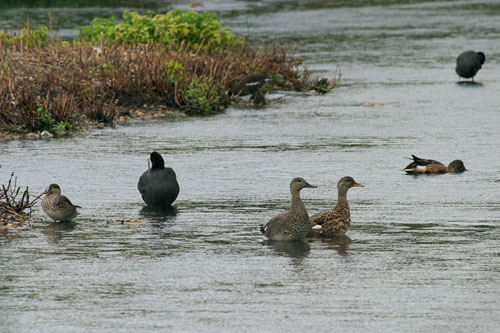
Alert Gadwalls (Anas strepera).
It seemed like nice weather for ducks, and the Gadwalls (Anas strepera) weren't going to pass it up. Several pairs took to the water and quacked and displayed at each other.

Gadwalls (Anas strepera) and Coots (Fulica atra).
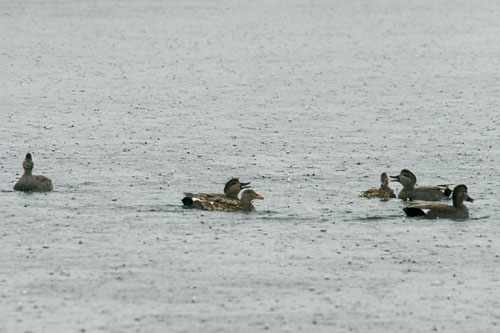
Gadwalls (Anas strepera) displaying in the rain.
The more restrained Shovelers (Anas clypeata) stayed away from the Gadwalls. A pair swam across the lake in the distance, seeming to have their heads tilted, so you could see the shape of their beaks.
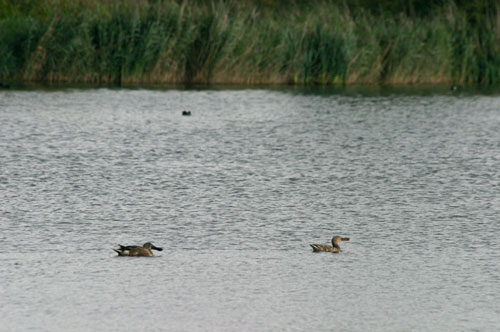
Pair of Shovelers (Anas clypeata).
Around the edges of the islands were several female Teal (Anas crecca), but no males. As the Sun came out, I took this photograph of a couple of them preening. With the weather improving, I took the opportunity to get back to the bus (avoiding the numerous slugs) before the rain returned.

Female Teal (Anas crecca) and a Moorhen (Gallinula chloropus).
Previous Entry | Wetland Index | Next Entry